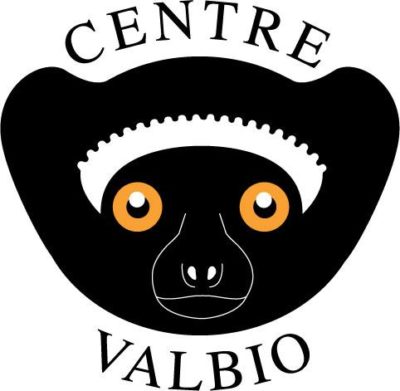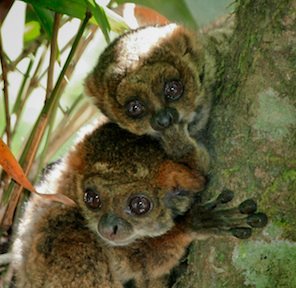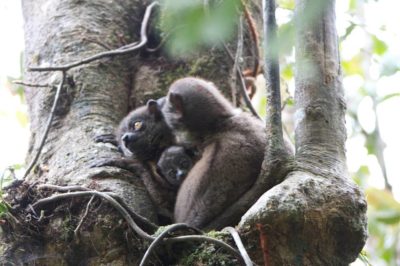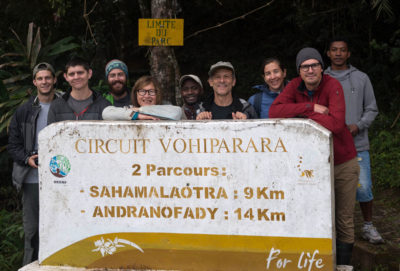Tell us a little bit about the history of Centre ValBio.
Inaugurated in 2003, Centre ValBio (CVB)is a world class research facility at the entrance to Ranomafana National Park in southeastern Madagascar.
CVB was founded by Dr. Patricia Wright, Distinguished Professor at Stony Brook University, New York.
In 1986, a research team led by Dr. Patricia C. Wright (then an Assistant Professor from Duke University) camped in the classified rainforest near the village of Ranomafana. On that expedition into the forest, they identified a species new to science, the golden bamboo lemur (Hapalemur aureus) and re-discovered a species once thought to be extinct, the greater bamboo lemur (Prolemur simus). These discoveries launched a three decade long study on the behavior and ecology of these bamboo lemurs, as well as Milne Edwards sifaka (Propithecus edwardsi).
When timber exploiters began to selectively log the forest, Dr. Patricia Wright approached the government about the possibility of formally protecting the forest, and set to work on the creation of a national park in 1987.
The first step was to visit all of the villages around the forest to hear their stories and discuss about their needs, a now common approach which was, at the time, groundbreaking to the way that parks were established.
In 1988, Lon Kightlinger and Patricia Wright established the first mobile health team to visit 18 of the villages around the park. Lon collected baseline data for his PhD dissertation and the health team won the hearts and trust of the communities.
By 1989 a wooden cabin was built to store equipment and have a dining hall; while the ever growing number of Malagasy and international research scientists continued to sleep in tents.
In August 1990, USAID awarded $3.87 million dollars for the creation of Ranomafana National Park, and in May 1991, Ranomafana National Park (43,000 Hectares) was inaugurated.
In 1993, it was necessary to build a second research cabin.
In 1998, management of the park was officially handed over to Madagascar National Parks (then ANGAP), and Stony Brook University continued to conduct research inside the park.
In 2000, the construction of a research station outside of the park began, and in 2003 the Centre de la Valorisation de la Biodiversité or Centre ValBio (CVB) was inaugurated.
Where is Centre ValBio located?
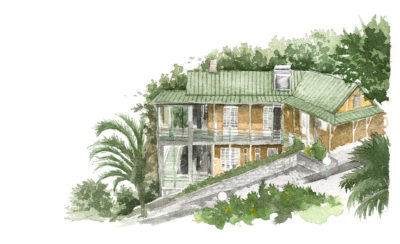
CVB attracts world class scientists doing significant work on climate change; wildlife and human infectious diseases; primate genetics, behavior and ecology; landscape ecology; human disturbance; taxonomy of reptiles and amphibians, chiropterans, arthropods, and primates. Specific research is conducted to better understand rural southeastern Madagascar: its wildlife, rainforests and the adjacent human landscape. Important collaborators have included Duke University, Harvard University, Stanford University, Seneca Park Zoo, University of California, Pennsylvania, University of Helsinki, Smithsonian Institute, Oakland Park Zoo and the California Academy of Sciences.
Which lemur species do you work with?
CVB works with all of the lemur species in Ranomafana National Park, but particularly Prolemur simus, Hapalemur aureus, Propithecus edwardsi, and Microcebus sp.
How does Centre ValBio help lemur conservation?
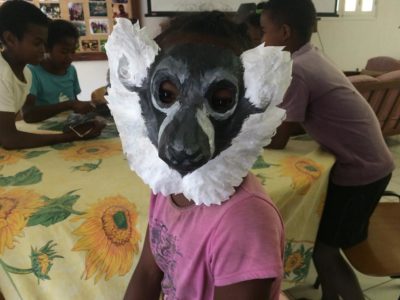
What are some of your recent achievements?
- 2007 Ranomafana National Park declared a UNESCO World Heritage Site
- 2012 Patricia Wright and CVB featured in IMAX film “Island of Lemurs: Madagascar” directed by David Douglas and narrated by Morgan Freeman
- 2012 CVB Founder featured in NY Times
- 2012 Our founder awarded the Commander Medal of Honor from President of Madagascar.
- 2012 CVB hosts International Prosimian Congress
- 2014 CVB founder receives Indianapolis Prize for Conservation
- 2014 American Institute Architects (AIA) 2014 award for design excellence awarded to InSite Architecture for CVB Namanabe Hall
- 2015 Anthony Bourdain films Parts Unknown Madagascar episode at CVB
- 2015 CVB hosts ASCAM II (A Strategy for the Conservation of Madagascar’s Amphibians)
- 2017 ABC Nightline films two episodes at CVB
- 2018 CVB hosts the African Lepidopteran Congress
- 2018 CVB hosts the “Crucible for Planetary Health”
Do you have volunteer opportunities at Centre ValBio?
Everyone can help us by spreading the word about the work that CVB does! CVB could also use communications volunteers to write blogs, take photos, collect testimonials from the field and share to social media.
We also welcome volunteer grant writers.
What do you need donations for right now?
CVB can always use funds to purchase field equipment (tents, sleeping pads and bags, headlamps, boots, Rite in the Rain notebooks).
We are also appreciative of donations to support our reforestation and livelihoods efforts.

